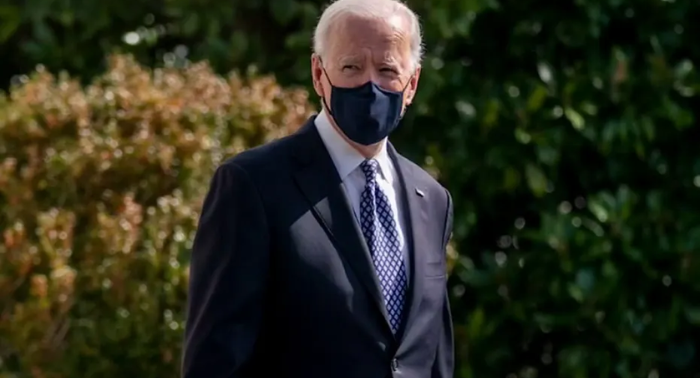The U.S. warning to Russia couldn’t have been clearer: Two weeks before Russia suffered its deadliest attack in years, American officials publicly and privately alerted President Vladimir Putin’s government about “extremists” with “imminent plans” for such an assault.
Under a principle of the U.S. intelligence community known as the “duty to warn,” American intelligence officials are obliged to share information about a serious threat if circumstances allow, whether the targets are allies, adversaries, or something in between.
Despite this warning, there is little indication that Russia took action to prevent Friday’s attack at a concert hall on the outskirts of Moscow, which resulted in the deaths of over 130 people. The Islamic State’s affiliate in Afghanistan claimed responsibility for the attack, and the U.S. said it possesses information supporting the extremist group’s claim.
John Kirby, the spokesperson for the Biden administration’s national security, emphasized that the warning should not be interpreted as a breakthrough in U.S.-Russian relations or intelligence-sharing.
“Yeah, look, there’s not going to be security assistance with Russia and the United States,” Kirby told reporters on Monday.
“We had a duty to warn them of information that we had, clearly that they didn’t have. We did that,” Kirby said.
While such warnings are not always acted upon, the United States has previously overlooked at least one Russian warning regarding extremist threats within the United States.
Here’s a closer look at the duty to warn, its origins, and how it can unfold when American intelligence agencies learn of imminent militant attacks.
On March 7, the U.S. government issued a remarkably specific warning: The U.S. Embassy in Moscow was monitoring unspecified reports indicating that “extremists have imminent plans to target large gatherings in Moscow, to include concerts.” The warning advised U.S. citizens in Moscow to avoid large events for the next 48 hours.
After the attack, U.S. officials stated that they had shared the warning with Russian officials under the duty to warn principle, although they did not provide specifics on how.
Putin publicly dismissed the warning. Three days before the attack, he criticized what he termed “provocative statements” from the West about potential attacks within Russia, suggesting that such warnings were intended to intimidate Russians and destabilize the country.
The emphasis on sharing threat warnings increased after the August 7, 1998, attacks by al-Qaeda on the U.S. embassies in Kenya and Tanzania. In response, then-National Intelligence Director James Clapper formalized the duty to warn in an official directive, stating that the U.S. intelligence community has a responsibility to alert individuals, both American and non-American, of impending threats of intentional killing, serious bodily injury, or kidnapping.
The directive also outlined circumstances under which intelligence officials could waive the duty to warn and remain silent despite impending danger. This includes situations where the target is an assassin or other extreme individuals, or when disclosing the warning could jeopardize the safety of U.S. personnel, intelligence partners, or their operations.
Under the Trump administration, U.S. intelligence agencies faced criticism for allegedly failing to warn U.S.-based journalist Jamal Khashoggi of a complex plot by Saudi officials that led to his killing in 2018. Media reports indicate that U.S. intelligence agencies did not respond to requests for records indicating whether they were aware of the plot in advance.
Under the Biden administration, the sharing of threat information with other governments has increased, although any threats that the U.S. intelligence community chose not to warn about remain unknown.
Strategic dissemination of intelligence reached a peak in the months leading up to Russia’s invasion of Ukraine in February 2022. During this period, the U.S. chose to declassify key intelligence on Russia’s invasion plans to rally allies and Ukraine, and unsuccessfully pressure Russia to withdraw its troops.
The duty to warn does not guarantee that the other party will heed the warning, especially when that party is an adversary.
In January, U.S. officials reportedly issued a similar warning to Iranian officials before bombings in the Iranian city of Kerman. The Islamic State claimed responsibility for the attack, which killed 95 people.
It is unclear whether the warning prompted any additional security measures at the event, a commemoration of the 2020 killing of an Iranian general by a U.S. drone strike.
In 2004, the government of Venezuelan President Hugo Chávez, an anti-U.S. populist, was “suspicious and incredulous” when U.S. officials relayed a warning about an extremist plot to kill him, according to Stephen McFarland, a former U.S. diplomat in Central and South America.
Such deep distrust has often undermined threat warnings when it comes to relations between Russia and the United States, even in the face of common threats such as the Islamic State and al-Qaeda.
In 2013, it was U.S. officials who tragically failed to adequately follow up on a Russian warning. Russia’s Federal Security Service warned U.S. officials in 2011 that a U.S. resident, Tamerlan Ts




